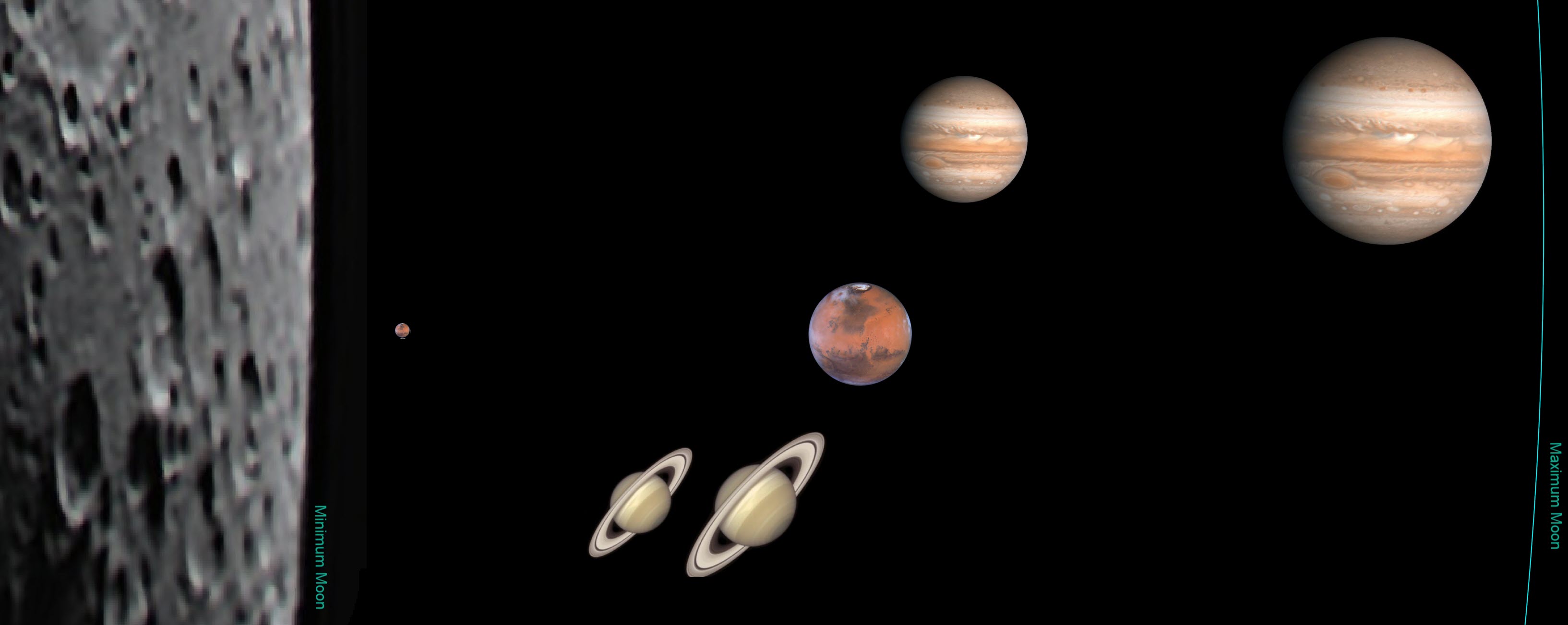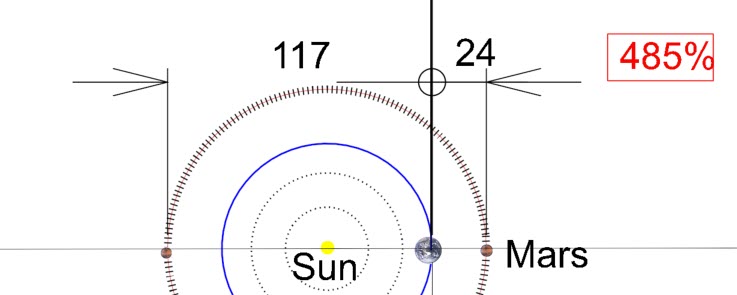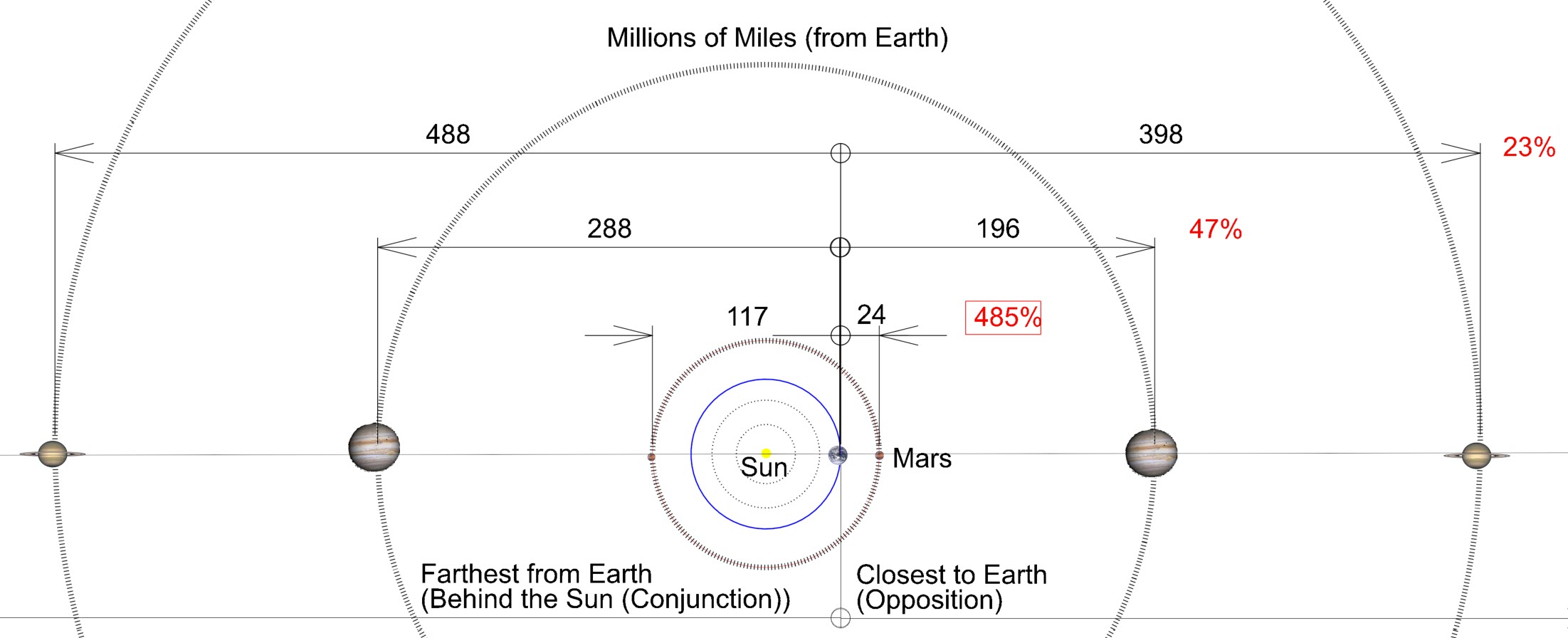Awesome (Always): Sun (with appropriate Solar Filters), the Moon, Jupiter and Saturn.
Pretty Good (once every twenty-six months): Mars. It's good now and peaks at mid-January 2025.
Mars is named after the God of War. While it's hard to pin global conflicts on Mars/Ares, he directly commits war on Peace of Mind. Call him the God of Guilt and the Ruler of Regret.
Why?
Mars is tough to observe. Even in the best of conditions. It's small. Other than its small distinct ice caps, its features are a faint salmon and faint grey: they're subtle. If it were a consistently lousy target, we'd accept that like we accept that for, say, Uranus, and Neptune. But periodically - every 26 months - it's pretty amazing. And because of that, if you miss that short "Excellent" window it can be maddening.

For those of you who don't like to read:
YouTube link: Opposing Mars: its 26-month Guilt Trip around the Sun
The Three* Planets Worthy of your Time
There are only three* planets that will wow a new observer. Saturn and Jupiter will always drop a jaw. For Mars, it depends on how close we are. Mercury and Venus show zero detail, but because they are closer to the Sun than Earth will show phases like the moon (in fact, Galileo saw Venus's phases and correctly concluded that it and us orbit the Sun). Uranus is a tiny green-blue dot; it's color is cool and it definitely looks like something bigger than a star; but no visual details. I have only once seen Neptune to look like anything other than a star: I could see that it was in fact a 3D dot through a 48-inch telescope in Kansas.
Summary: Jupiter - always great; Saturn - always wowwing; Mars - sometimes.
While Mars is dramatically smaller that the Gas Giants, we pass dramatically close to it. It can look big at Opposition.
Below is an image of the relative sizes of Jupiter, Mars and Saturn at their nearest and farthest distances to Earth:

Note that at its largest tiny Mars appears larger than giant Saturn ever does.
Notice also that Jupiter at its smallest is larger than Mars and Saturn (and everything else in the solar system combined (other than the Sun and Moon)). Jupiter is always huge. It's always a good target (except when it's passing behind the Sun).
Saturn, because it is very large and the distance only varies by around 25% is a consistently good target. Her rings are unique and visible even in binoculars. Saturn is a best bet to elicit gasps from first time observers. It's alway stunning.
While near opposition, Mars is large. The rest of the time it's small. One problem is because our orbits are very close, we pass by relatively quickly: the best observing time is only a month or so before and after opposition in a 26-month cycle. Then the rest of the time it's too tiny to show any detail in modest scopes. Basically, they only discernable feature of Mars for most of every 26 months is its orange color. It often looks like Saturn without rings.
Orbits!
Why all the variation? It's all in the geometry.
The planets, asteroids, and comets are unique in the heavens in that their proximity to Earth varies. (Everything else is pretty much constant-distance from Earth. Those other targets often have "seasonal" designations based on when they're overhead after dusk.) You get better views of the solar system objects and can see more detail when they are close.
For the outer planets, that closest time is when the Earth passes between the Sun and them. When the Earth is between a planet and the Sun, the planet is opposite the sun, hence the name Opposition.

While Mars is disappointing for most of its 26-month cycle (relative to us), it's a great target when it's nearby (around Opposition). It's the only planet where you can see surface details. Because tt's a twenty-six month period between oppositions, if you miss Opposition, you have to wait two years to get another chance at a good view.
This can put pressure on you to drag out a scope and leaves you with a long time to nurse regrets if you miss out. FOMO is a big thing with Mars.
At Opposition Mars is almost 5 times closer than at its farthest position (when behind the Sun).

Khan Academy has a great visual distance animation.
Another guilt-factor: Mars Opposition recurs far less regularly than the other outer planets: 26 months! Jupiter is about 13 months, Saturn less.
Jupiter and Saturn are pretty much good targets all the time (except when they are passing behind the Sun). Call it eleven months out of the year. Mars: two months everything twenty-six.
Jupiter is big enough that it always looks good, even when it's about to disappear behind the Sun.
Saturn's orbit is so big that it doesn't matter all that much where the Earth is its comparatively tiny orbit.
As the orbits get farther out, the difference between far and near diminishes dramatically (485%, 47%, 23% for Mars, Jupiter and Saturn):

Mars' day is a few minutes longer than ours. If you observer for several hours at once or over the course of a few days, you can see the features rotate. The atmosphere is thin, but you can see evidence of it. Small dust storms can obscure features for short periods of time. Occasionally global dust storms will cover the whole planet obscuring all details. A recent opposition was "ruined" when a global dust storm covered the planet for months, completely obscuring all the details. That's reason to observe prior to Opposition.
Remember to observe Mars A LOT around opposition. You don't want to have regrets to fester for the two years before good views can again be had.
Here's a really good image of the size by date around this opposition: https://images.immediate.co.uk/production/volatile/sites/25/2022/05/mars-opposition-2022-b99df4a.jpg?quality=90&webp=true&fit=1200,761 from BBC Sky at Night Magazine